by Eric Meier
In the process of identifying wood, things can get a bit overwhelming when faced with the hundreds and hundreds of possible species. Yet in the context of everyday woods that most people in the United States or Canada are likely to encounter, the list of possible woods is usually much shorter. This article is meant to act as sort of a “Cliffs Notes” to help address the most common (and hopefully, obvious) questions of wood identification.
1. OakComments: This wood is everywhere! Chances are, there’s something made of this wood within a stone’s throw of where you’re sitting right now. It’s used for cabinets, furniture, flooring, trim, doors, and just about anything else that can be made of wood! It’s very frequently stained a medium reddish brown, so it may look slightly darker than the raw sample pictured to the left. Lookalikes: Ash (lacks the prominent rays that are found in oak). Also, see the article on Distinguishing Red Oak from White Oak. |
|
2. MapleComments: This light-colored wood is seen almost as frequently as oak, and is usually not stained a dark color, but is kept a natural whitish-cream or sometimes stained an amber-yellow. It’s commonplace in furniture, flooring, trim, and in places where a pale, light-colored wood is needed. Quartersawn pieces with a freckled appearance are commonly used in countertops and butcher blocks. Lookalikes: Birch (generally has narrower rays than those found in maple). Pine (generally much lighter and softer than maple, and with more conspicuous color in the growth rings). Also, see the article on the Differences Between Hard Maple and Soft Maple. |
|
3. WalnutComments: The real deal. Walnut is unique in that it is one of the only woods that is naturally rich, deep chocolate brown (though it can sometimes be slightly lighter as well). It’s almost never stained, and is very popular for use in furniture. It’s also not uncommon to see walnut used in veneered pieces as well. Lookalikes: Mahogany (sometimes it’s stained very dark and the color can appear very similar to walnut). Butternut (sometimes called “White Walnut,” it’s related to walnut, but is paler in color and very lightweight). |
|
4. CherryComments: The subtle reddish brown appearance of cherry is usually seen on fine furniture and trim. It’s also not uncommon to see cherry used in veneered pieces as well. Along with Black Walnut it’s one of the premier hardwoods in the United States. It’s sometimes stained just slightly darker to give it a more aged appearance. Lookalikes: Poplar (stained poplar can be almost impossible to tell apart from cherry). |
|
5. BirchComments: Most commonly seen as plywood. Birch also tends to pop up in furniture and millwork too. Lookalikes: Maple (generally has wider rays than those found in birch). Cherry (the grain patterns are very similar, and if the birch is stained, it can be difficult to tell apart from cherry). |
|
6. PoplarComments: This is an inexpensive utility hardwood that’s used in a number of applications, such as upholstered furniture frames, veneer, and is also stained to mimic other more costly hardwoods. Lookalikes: Cherry (if poplar has been stained, it’s almost impossible to tell apart from cherry) |
Get the hard copy
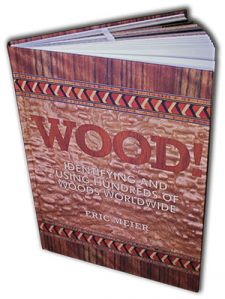

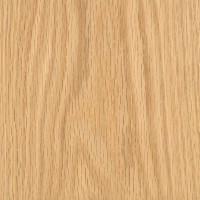
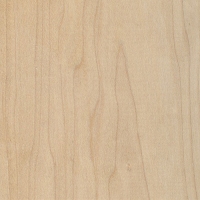
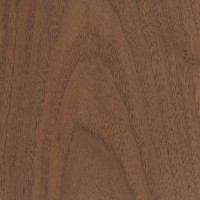
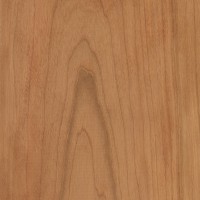
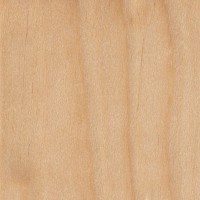
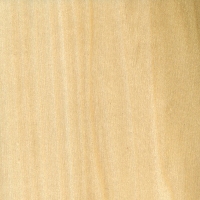
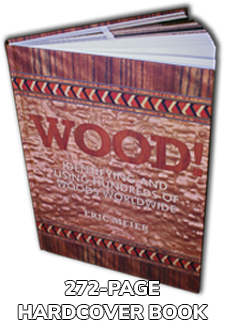
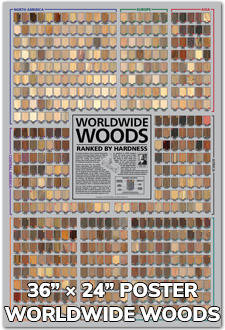
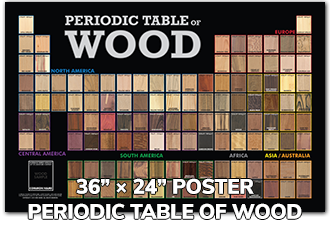
Anyone know what kind of specific wood this is? There are three different pics 3 different kinds. Please help! The second pic I’m thinking some form of maple it’s really smooth and just planed it so it’s hard.
I can’t tell on the first pic. The second pic looks very similar to yellow poplar with that greenish hue. The third pic could very well be some flatsawn hard maple. The grain lines are pretty close together though, so whatever it was, it appears to have grown pretty slowly.
I thought it was poplar too at first but it’s like super hard and I have poplar on deck which tells me this is no poplar and as for the first pic the more I stare at it it starting to remind me of hickory but I dunno… this is driving me nuts lol
Can you get a finely sanded close up picture of the endgrain? Can you try weighing the wood and getting a measurement of its density?
Could you help me determine if this looks like its Koa wood? Thanks!
It’s possible, but unless you knew the wood came from Hawaii, it would be very hard to prove 100% that it’s koa. Koa is a member of the Acacia genus, which has about 1000 different species, and it’s not always apparent which one is which. You could try testing a fresh surface of the wood for fluorescence as many Acacia species are fluorescent under a blacklight. https://www.wood-database.com/wood-articles/fluorescence-a-secret-weapon-in-wood-identification/
Thankyou very much! I may just give that a try!
Greetings. A Virginia friend is offering up this “Redwood” for woodturning. Checked your site and as I suspected redwood is west coast. Wondering if you have any guesses as to what this actually is.
Sorry if this is a duplicate. Can you identify this wood? Very lightweight and soft. First pic is with shellac. Thank you.
I can’t tell from the pics. Can you try finely sanding the endgrain and getting a clearer picture?
Hope these help.
I can’t see any resin canals in those pictures, so that would rule out pine. It is probably another softwood species, such as fir or hemlock.
Thanks. I found it in my grandpa’s shop. He worked at a lumber yard in the ‘40”s-50’s. I’ve never seen anything like it.
Does anyone know what kind of wood this is? It’s very heavy wood and hard.
Does anyone know what type of wood this is? It appears to be an old table given the metal decor it came with. I’m trying to refinish it but it would help to know what type of wood it is. I am a bit surprised how much the color changed when I just applied a wood Conditior…no stain this is the natural color. I’m stumped. I’m a newbie. Thank appreciate any ideas. The first photo is sanded raw wood. Second photo is after I applied wood conditioner.
I have e a few larger pallet pieces I’m trying to identify. I’m leaning towards a soft maple.
I am working on a very old parquet inlaid table. In the 2 photos attached are 3 squares. One shows the top side with the stain darkened grain, the other shows the raw side. Anyone have any ideas on what wood it might be?
This small sample of wood has been sanded. It comes from a cross (crucifix) that I trying to restore. It is light but does not mark like soft wood.
Custom made dresser from 1949. North Carolina.
Those little jagged lines between the growth rings strongly suggest that it is elm.
Found 60 boards of this sitting on a table in the basement of a church member. Was told to take if I wanted it. All rough saw. My first impression was black walnut but, when I got home and put it besides a real walnut board from Woodcraft it’s making me wonder. Can I get a helping hand?
Can’t tell in rough sawn state. Please clean up the surfaces of the wood first and repost pictures.
This is cleaned up. Ran thru planer and joiner.
Would agree that it doesn’t look like walnut. Closest domestic wood I can think of would be cherry. Would need to see a closeup of the endgrain to help confirm.
Close up of end grain.
Hi, sorry I’m not sure if the endgrain surface is out of focus, or if it’s still just too rough to see the details. I can’t see enough detail in the picture for an ID.
Hello – we bought a very old log home and are trying to identify the existing wood floor. Home is in southwestern Ontario, Canada. Here is a picture of the sanded portion.
Looks like southern yellow pine. Or possibly Douglas fir.
Any idea what kind of wood it is? It’s on an antique wood table. It is awfully stained and I am trying to figure out if it is worth it to (learning to) restore it.
Looks like a softwood like pine. Probably not the best candidate in terms of wood value, though it may be satisfying to refinish something so stained.
Thanks!
I found these scrap wood pieces from my shed. I don’t remember where I got them but they feel heavy. I want to learn to diy a cutting board/butcher block after watching some YouTube videos. Are these hardwood? They may not even be the same kind of wood though. Thanks!
Looks like oak.
Hi Eric, could you tell if that is red oak or white oak? People say white oak is good for making cutting board, but never red oak.
The photos look a bit ambiguous so it’s hard to tell for sure. If you can get a clear closeup picture of the endgrain, then you could check for tyloses in the pores which would be more helpful to tell white and red oak apart.
Care to give a guess at this flooring in the 1920s Philadelphia rowhome we’re renovating? It’s all rather thin pieces (1/2″ or thinner) set in a square pattern in each room. each room has a few layers of paint, which I’ve stripped off of this loose board.
Thanks in advance for the insight!
here’s a better shot as the full floor is slowly being revealed
Looks like oak
I’m told it has an “interesting smell” and they think it came from the middle east somewhere. They say they paid 650 for it a few years ago. Any ideas?
Hi?
I found this side table by the dumpster and I had to take it home. It’s so beautiful. Can anyone tell me if the wood in the center is burl?
Thanks,
Nicole
It is a burl veneer for the top. Burls are really hard to ID since so many of them look very similar.
Any idea of wood type on these Scandinavian chairs? Was thinking it was newer teak or African teak. Thanks!
Can’t tell from the pics. Teak seems a reasonable guess but would need to see endgrain to confirm.
Excuse the atrocious picture quality…. This is a door from Boston from the 1890s. I have just sanded off some paint and am blown away how light it is…. I am at the critical junction where I can keep removing paint or give up, repaint it and call it a day, but I am trying to figure out what type of wood it is so I can guess what it might look like after all the effort? It is very smooth but much harder than any pine I have felt. Maybe maple?
Sorry I can’t tell from the pics. I think I can see what appears to be knots, if so, that would probably rule out maple and most hardwoods as they usually wouldn’t contain knots like this. Probably a softwood. Regardless of species, the grain seems very pale and inconspicuous, so I don’t think a stain or most finishes would be able to alter that too much. I’d say if you weren’t going for a uniformly light colored appearance, it might be best to repaint it again.
Thank you Eric!
I am now pretty sure it is pine because even after 130 years, with enough sanding, it smells like pine!
Any idea what type of wood this is? I was told it was pine but it does not resemble any pine I have seen…..
Does it have a fairly distinct odor? It looks pretty similar to eastern red cedar to me.
Yes. It smells amazing. Does eastern red cedar have a pine scent? My garage smells like Christmas after turning this bowl, lol!
Well, pine smells like pine, and cedar smells like cedar; hard to put smells into words. But eastern red cedar is known to have a very distinct and lingering odor. I’d say based on the color of the wood too, it’s very likely to be cedar.
Eastern Red Cedar
Eastern cedar.
Need help identifying this wood veneer on an antique clock. Thanks!!
At the very least, the grain superficially resembles mahogany.
Thanks Eric. Have a place I need to patch the veneer. Think I’ll go with Mahogany, and bleach it before gluing.
Then finish after blending the repair.
Appreciate your input!
Hi! I would love help identifying the wood we discovered under the carpet of our “new” old home. We’re in Duluth, MN and the home was built in 1901 (though I’m not positive if the wood floor is original or not). It is not in great shape with paint splatters, staining/discoloration, patches, etc. The main stained areas are quite reddish/orangish, but we did a rough sand on a small spot which reveal a much lighter blonde. I’m not seeing much wood grain and really have no idea how to determine what we’ve got, but I’m guessing it may be maple?… Read more »
It’s most likely maple, but there’s also a chance it could be birch. I can’t tell from the pictures, but what I like to do with floors is walk around and take a closer look for birds eye figure. Chances are with an entire floor, there ought to be at least one or two pieces of maple with at least a little bit of birdseye figure on them. But if the floors were birch, that feature would be entirely lacking. https://www.wood-database.com/birdseye-maple/
Thank you so much for the quick and super helpful reply! After a quick walk through, I’m not noticing any very apparent birds eye figure (though it is a bit hard to tell through all the paint splatters and such). I’ll keep a close eye out to see if I can spot some, but birch definitely seems like a really reasonable possibility given its abundance up in our neck of the woods.
Thanks again!
I actually found some birds eye! Maple it is!
Thought I would post an update/picture here in case it helps anyone else.
Thanks so much for this great tip Eric – I really appreciate it.
Any ideas what wood this is please? it is a large window which appears to be a hard wood but not sure.
Any help would be appreciated.
That looks like a softwood, if you are near the West coast, I’d say it’s probably Douglas fir.
Thanks Eric. I am actually in the UK. I was thinking that it could be an antique pine but not sure.
Alright, I was a bit thrown off since this page is about US hardwoods. I’m not familiar with what would’ve been used in construction in your area, but pine (or another softwood species) is a very good starting point. Maybe someone with more knowledge in UK woods in particular can chime in.
Any idea what this piece is made of? Antique end table; wood is soft, very light where not stained, has a faint sweet / dried tobacco odor, though that might not be from the wood itself. I’m guessing some variety of pine, but there’s no knots.
Very hard to tell because the wood has been stained, so it’s hard to say what the true wood color/appearance would be. Probably a softwood of some sort.
The grain pattern almost looks like sycamore to me?
Hi, anyone know what wood this is? it is very tight grain almost like a steak. Very silky smooth and almost varnished looking surface when cut. Black, dark brown and slight red tinge. The wood in the picture hasnt any finish on it. thanks
My friend an arborist says this is maple! I disagreed and he tells me ” one thing you don’t want to do is tell me I don’t know what I’m talking about, I know wood”…the tight grain tells me he isn’t even close. It looks closer to oak to me but I don’t know. This piece is approximately 4″ x 24″ and is very dense and heavy. Any help would be appreciated.
Is this raw wood, or is there a stain or finish applied? Can you get a pic of the endgrain?
This is the backside of a painted sign, all end grain is also painted. It is raw wood on the back no stain.
The pic didn’t come through. I will say, unless there is something staining the wood and/or pores, maple definitely shouldn’t have a darker brown coloration to the pores. So if that’s raw wood, it certainly doesn’t look like maple to me. But maybe the one pic is fooling me.
I bought an old table recently, and I want to refinish it. The pictures are of the top and one of the side extensions. The center sections are veneer and it is damaged in a few areas. Can anyone help to identify the veneer wood in case I need to repair a few areas? Thank you.
Looks like some quartersawn white oak. Very nice stuff and commonly seen on antique furniture here in the US.
Thank you! After reading your response, I looked it up and it’s a perfect match! As it turns out, the first repair came out wonderfully, so I am hoping to avoid any veneer replacements, but it is great to know the wood in either case. Thank you again. Have a wonderful evening.
Anyone know what this table is?
Judging by color variation in the sap & heartwood and best I can tell from the grain pattern very well could be walnut you have there.
This is from an older ( 1940-1950s) drop leaf dining table.
Can you identify it??
The color in that picture looks a little off or strange. But the grain reminds me of black walnut.
Thank you. When I compared it to samples online, it said black walnut also. I appreciate your prompt answer!
Can someone please tell me what type of wood this is getting ready to repost my floors want to make sure it’s worth it
Anyone know what kind of wood this is? It came from a tree in eastern Kentucky.
Looks like spalted sycamore
Does anyone know what kind of wood this is?
Does anyone know what type of wood this is? It is kind of heavy and I’m no expert, so please help me out!
?
the large repeating patterns suggest it’s a veneer. Possibly cherry?
I just bought this dresser and I am stumped as to the type of wood. Can you help? I sent a pic of the dresser itself as I don’t know it’s era either. All markings have been removed before my purchase.
Looks like quartersawn white oak. The stain color and style looks like an antique, though I am not knowledgeable in dating things like this. If I had to guess, I’d say possibly pre-dating WWII.
Looks like tiger oak, but pretty sure it is a type of oak.
Hi,
I just ordered redwood for a patio. One of the posts doesn’t look like the other two. The end grain is not as tight, and it’s dry (therefore much lighter than the two fresh pieces). Is my third post redwood or something else?
-Kevin
Am restoring this old cabinet and wondering what kind of wood this may be?
Looks like a dense softwood species, so maybe Douglas fir or southern yellow pine.
Thank you!
Do you happen to know what type of wood this is? I purchased it to refinish. This was under 2 layers of paint. I have no idea the history of where it came from.
Looks like quartersawn white oak. Based on stain color it looks like an antique.
Was wondering if anyone could identify this wood? It’s not oak was thinking maybe pecan?
Are you sure it’s not just oak? Maybe get a closer picture of that part of the endgrain near the top of your initial pic.
Hi
This is an unfinished covering on the main beam in out house. We want to finish it but have no idea what kind of wood it is? Any ideas?
Thanks
I’m sorry, I can’t tell from that pic.
Yo can someone help me identify this branch I collected it and sanded it down and washed it and baked it to put in my snake tank but I’m afraid it’s pine
Hello, would anyone be able to identify what this table is made from? Can’t give any info about it, came from my late Grandad. Would love to know more about it, but I know absolutely nothing about wood. Tia
Looks like oak. The top is veneered, with solid side trim.
I stripped off the varnish from this old mantle piece with a gel stripper. I cleaned it with denatured alcohol. I did not sand anything. I am very curious to know what wood or woods it is made of.I believe it was used for a fireplace due to the varnish appearance and several marks underneath the shelf part. I think it’s cherry, but any thoughts are appreciated! The last picture is before I stripped it.
It just looks like a softwood species to me, espcially with the very wide coloration of the growth rings, which in the case of softwoods is caused by the latewood, which can sometimes be very wide. But I would need to see a closeup image of the endgrain (ideally, finely sanded for clarity) to tell with any degree of certainty.
Hi, Eric. Thank you for your quick reply! I sanded the endgrain. I hope enough for you to be able to determine the wood. I also am including other images that hopefully help. I appreciate your help!
Kristina
Yes, I can see resin canals in the endgrain of one of the pictures, so that would indicate pine.
Thank you so much!
I think this is maple. I didn’t use any stain, just a little bit of odies universal. The second picture I I’m not sure at all.
I don’t think it’s maple. It looks like a ring porous hardwood. Possibly a species of hickory? Seeing a clear, closeup picture of the endgrain would help with ID.
This unfinished wood was in our house when we moved in. We believe it was at one point covered with carpet and previous owners removed the carpet. The house is about 100 years old. I’m considering finishing! Any input on identification would be so helpful.
A dense softwood, most likely a species of southern yellow pine. Or if you are near the West Coast, it could be Douglas fir.
It may be hard to see the true color but any thoughts on what wood? Just curious, but I’m thinking Oak?
Not oak, looks like a softwood, possibly a hard pine.
Any ideas of what this could be?
I can’t figure out what this strange grain is! Is this yucca or palm?
To me, it looks like weathered oak. Is it fairly dense? I see what appear to be fairly large rays, so that’s at least one indicator of oak.
Hi! Could someone try and identify this please. Many thanks
Hmm, that looks interesting, with some fairly large and evenly spaced rays. I’m assuming since you’re posting this on the page about US hardwoods, that it comes from the US, correct? Is it possible to clean up the endgrain some more with sandpaper and get a closer image?
Oh I didn’t realize it was a US hardwood specific. No I’m in Ireland. Ive since been informed that it came in a box with some teak, oak, red pine and mahogany. So I’m guessing oak or teak? I can give it a sand later. Thanks for the reply!
Can anyone tell me what kind of woo this is. It’s definitely a hard wood but I’m lost on the specific name
Possibly maple, just judging by the color and spalting in the sapwood. Can’t tell for sure from that pic.
please identify
it is marked vietnam
Maybe rubber…